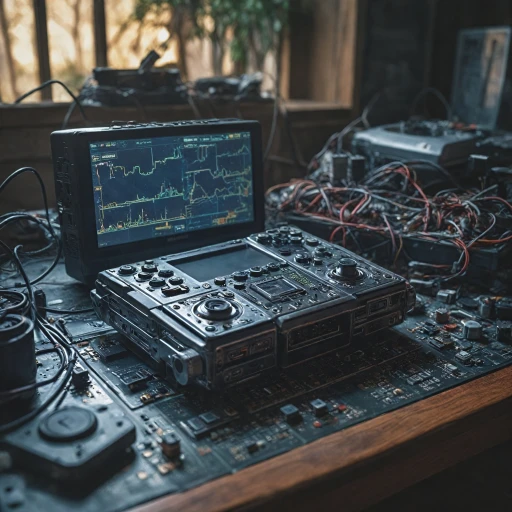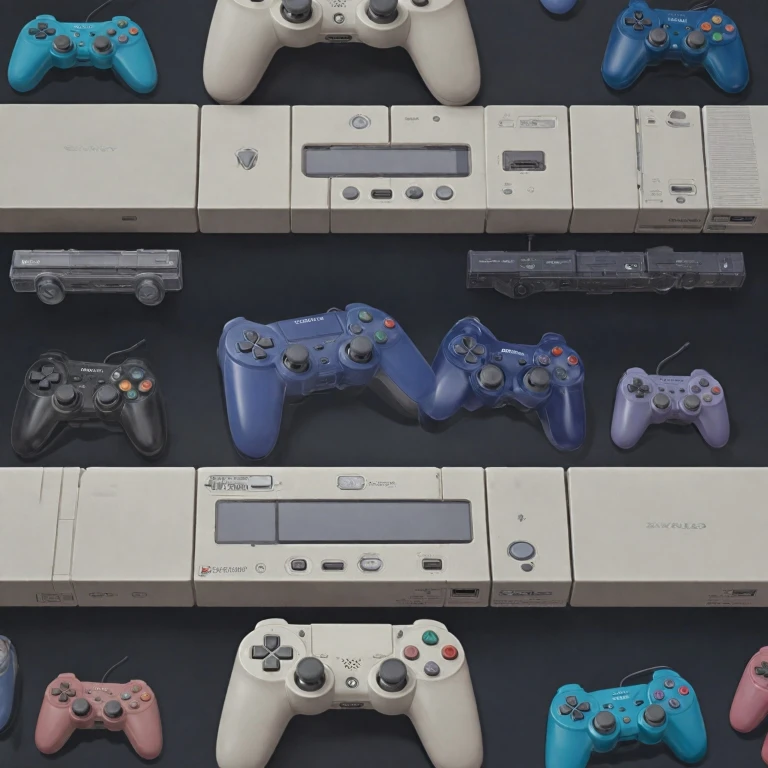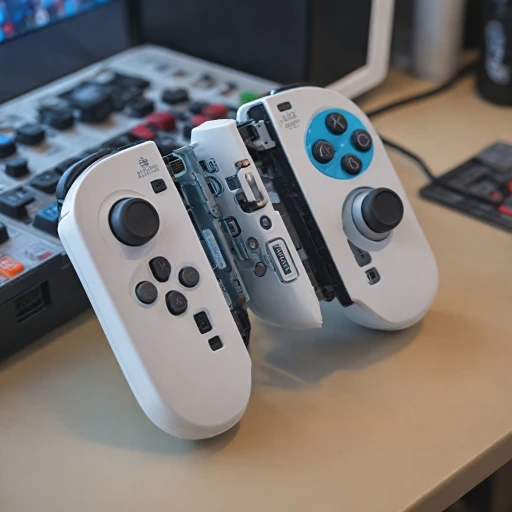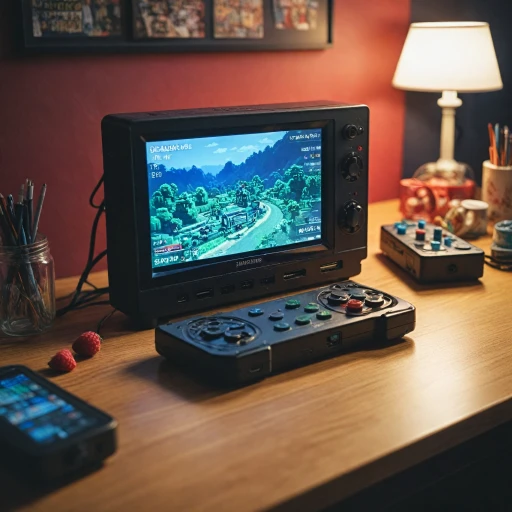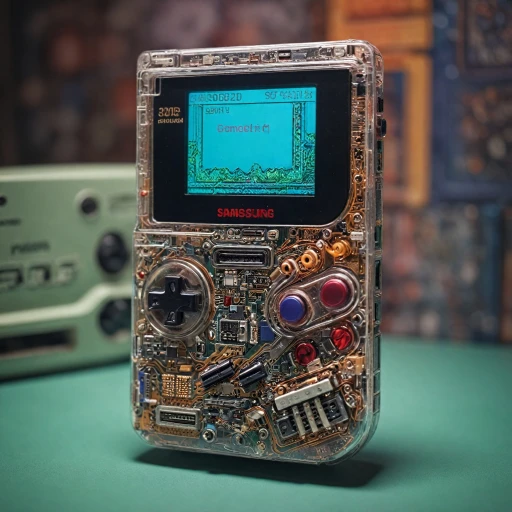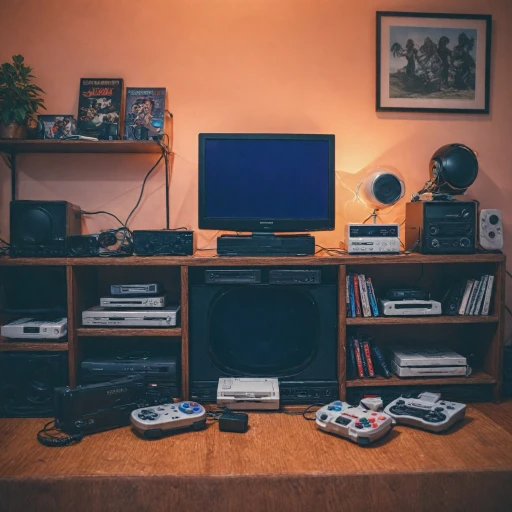The Origins of the Directional Pad
Tracing the Origins of the Iconic Cross-shaped Input
The directional pad, commonly known as the 'D-pad,' is a familiar feature on nearly every game controller. Its journey began in the early days of video gaming, where it played a pivotal role in the evolution of gaming consoles. This cross-shaped input device first made its mark with Nintendo's Game & Watch series, eventually becoming a staple on the groundbreaking Nintendo Entertainment System (NES) controller. Emphasizing enhanced comfort and ease of use, the directional pad introduced a new era of game control.
Before the D-pad, video games relied heavily on joysticks for navigation, which, while innovative at the time, proved cumbersome for quick, precise control. The new design brought a significant shift in gaming dynamics. Offering a simple, intuitive interface, the D-pad allowed players to execute movements by pressing one of the four directional buttons: up, down, left, and right. This facilitated more accurate input, enabling finer control in video games such as "Donkey Kong" and later, expansive RPGs and fighting games.
As a result of its effectiveness and usability, the directional pad quickly became a staple in video game controllers. Its design allowed players to interact with games in ways previously unimaginable, like navigating through intricate game modules or menu navigation in complex game interfaces. Over the years, it has stayed relevant, adapting and evolving to meet the growing demands of gamers.
In addition to its initial success, the D-pad inspired the design of many future game devices, including the Nintendo Switch and the Wii Remote. This close collaboration between hardware design and gaming interface ensured the D-pad's place in gaming history. Today, its legacy endures as it continues to influence newer generations of game controllers, paving the way for innovations, as we'll explore in subsequent sections.
The Role of the Directional Pad in Game Play
Significance of the Directional Pad in Game Mechanics
In the realm of video games, the directional pad plays a pivotal role in ensuring seamless interaction between players and their gaming devices. Often recognized for its cross-shaped design, the directional pad facilitates precise navigation and movements, particularly significant in gaming genres such as fighting games and platformers.
The introduction of the directional pad marked an evolution in controller technology, offering a more intuitive method of input compared to predecessors. Devices like the Nintendo Game & Watch began to incorporate this feature, setting a precedent for its integration into future game controllers.
Directional pads allow players to control characters and navigate game menus effortlessly. The compact arrangement of directional buttons provides quick access to up, down, left, and right inputs, crucial for executing timing-sensitive actions like those required in grappling hook maneuvers or navigating intricately designed game levels.
Comparing systems, the NES controller exemplifies the practicality of the directional pad in early gaming systems. This build was soon adapted by other manufacturers aiming for precision and comfort. The adoption of directional pads across consoles indicates a universal recognition of its contribution to gaming experience enhancement.
As technology advances, modern controllers, such as the Nintendo Switch Pro Controller, have taken directional pad design into the digital age. Enhanced comfort and precise input remain central to their development, with features tailored to address player feedback on performance and usability.
Explore the journey of this vital module in controller evolution to better understand how it continues to shape user interaction within the gaming universe, even amidst hardware innovations. For more on the historical context and continued relevance of controller features, refer to the
Sega Genesis packaging's impact.
Comparing Directional Pads Across Different Consoles
Contrasting D-Pads: A Comparison Across Consoles
The directional pad, often referred to as a D-pad, has become an iconic component of gaming controllers. Its design and functionality have varied across different gaming consoles, influencing the way players interact with games. Each video game console manufacturer has approached the directional pad design with its unique blend of creativity and practicality.
Nintendo, for instance, forever changed the game with its cross-shaped pad module, originally seen on the Game & Watch and later perfected with the Nintendo Entertainment System's controller. The D-pad offered enhanced comfort, allowing left-handed and right-handed players alike to navigate menus and control characters with ease. The same cross-shaped design continues to be a staple in modern Nintendo controllers, including the Nintendo Switch.
Meanwhile, the directional module on the PlayStation's game controllers, such as the DualShock series, opted for separate directional buttons rather than a single molded pad. This was seen as a homage to the traditional movement in arcade fighting games, where precision in input plays a critical role.
The Xbox's approach introduces the Ippon pad, emphasized in their pro controller line, where customization in the control module provides a transformed experience. Players can swap out directional buttons to optimize for specific gaming styles or enhance input accuracy.
Additionally, remote controls like the Wii Remote have deviated significantly from traditional D-pad designs, emphasizing motion-based inputs, yet still maintaining a simple directional input for basic navigation.
Exploring the evolution of directional pad technology across different gaming devices reveals a close collaboration between user feedback and design innovation, ensuring that while aesthetics and ergonomics might vary, the functional core of the directional pad remains consistent across the board.
For those interested in digging deeper into personalization options in current consoles, visiting
exploring virtual reality options for Xbox enthusiasts can offer more insights into how traditional controls and modern tech are intertwined.
Innovations and Advancements in Directional Pad Technology
Innovative Directions in Control Technology
The world of video games has always been driven by innovation, and the directional pad (D-pad) is no exception. Over the years, there have been significant advancements in D-pad technology, shaping the way we interact with our favorite games, from the classic "Donkey Kong" to modern titles on the Nintendo Switch.
Today, several gaming devices have adopted unique approaches to D-pad design. Consider the cross shaped module seen on the Nintendo Pro Controller. This design emphasizes precision and comfort, enhancing the player's control during complex menu navigation or fast-paced fighting game sequences. The choice of materials, textures, and even the curvature of these directional buttons have been fine-tuned to ensure enhanced comfort and seamless input.
In addition to design improvements, technological advancements have tailored D-pads for specific game genres. The grappling hook-like responsiveness found in some modern D-pads allows for quick directional changes, essential for fast-action video games. This evolution showcases the close collaboration between developers and engineers who continually push the boundaries of controller technology.
Remote controls with integrated D-pads, such as the Wii Remote, further expand the possibilities for game interaction. By combining motion-sensing capabilities with traditional D-pad input, these controllers offer a hybrid experience that bridges classic and contemporary gaming.
Despite these innovations, the core function of the D-pad remains unchanged: providing players with precise navigation and control. As video games continue to evolve, the D-pad's legacy endures, adapting to new challenges and opportunities in the gaming landscape.
Challenges and Limitations of the Directional Pad
Overcoming Hurdles with Directional Pad Technology
Despite the numerous innovations in directional pads over the years, these integral modules of game controllers face several challenges. Primarily, the issue of "enhanced comfort" continues to be a focal point in design discussions. As games evolve, so do their control needs. Directional pads need to provide precision and comfort for prolonged periods during complex gameplay. Consider playing a fighting game where executing moves with precision is key. Inefficient design can lead to discomfort and hinder gameplay fluidity.
The "cross shaped" design of the directional pad, while iconic from devices like the Nintendo console remote controls, has witnessed iterations aiming to boost ergonomics. However, creating a universal design that accommodates varied "control" preferences remains a challenge. Different games require different interaction modes. What works seamlessly for a "donkey kong" adventure might not suffice for a "menu navigation" task in a modern "video game".
Moreover, directional pads must grapple with technological constraints such as input module reliability and the need for consistent performance across various "controllers". Reflecting on innovative designs like the "Nintendo Switch pro" controller or the enhanced "wii remote", the emphasis is clear: solving latency issues and ensuring seamless input recognition is key.
The "privacy policy" implications also emerge due to close collaboration between manufacturers and software developers. Ensuring that inputs remain secure and responsive is paramount, especially as gaming progresses towards networked and collaborative environments. Consequently, manufacturers continuously refine the directional pad's responsiveness, achieving a delicate balance between tactile feedback and digital reliability.
"Ippon" or one-button game controllers and other minimalistic designs emphasize how simplicity drives innovation. However, such designs simultaneously highlight the directional pad's pivotal role in game control evolution, enduring as a cornerstone despite burgeoning technological advancements. While these challenges persist, they fuel ongoing advancements as developers strive to meet emerging gaming demands.
The Future of the Directional Pad in Gaming
The Next Frontier for the Directional Interface
As gaming technology continues to evolve, the directional pad remains a critical element for navigating through the intricate landscapes of video games. Looking ahead, the integration of advanced features and better ergonomics in directional pads is expected to shape the next generation of game controllers.
One of the exciting prospects is the potential fusion of directionality with haptic feedback. Imagine a directional button setup where each press offers a distinct tactile sensation, enhancing the immersive experience. Manufacturers are looking at integrating adaptable modules that can switch between traditional cross-shaped buttons and customizable forms, depending on the game genre or player preference.
Another promising development is the adoption of directional pads in virtual reality. As VR gaming expands, the challenge of providing intuitive and seamless navigation can be met with redesigned pads, offering better control within these demanding environments. Devices like the Nintendo Switch have already illustrated a shift towards multi-functional controllers, providing enhanced comfort and close collaboration with game dynamics.
Moreover, as video games increasingly emphasize complex movements—like the agility required in a grappling hook move within fighting games—the nuance in directional pads will be pivotal. Pads that respond dynamically to pressure sensitivity can provide the precision that players demand in today’s high-stakes gaming scenarios.
While traditional game controllers will always hold foundational status, the future belongs to hybrid designs that integrate more sensors, smarter directional input, and improved accessibility options. As many players remember the classic feel of a pro controller during an intense game of Donkey Kong, they simultaneously look forward to the innovations that devices like the next evolution of the Wii Remote might hold.
With the directional pad continuously adapting, it remains to be seen how its evolution will redefine the landscape of video game interaction, promising an even more engaging and intuitive gaming experience than ever before.
